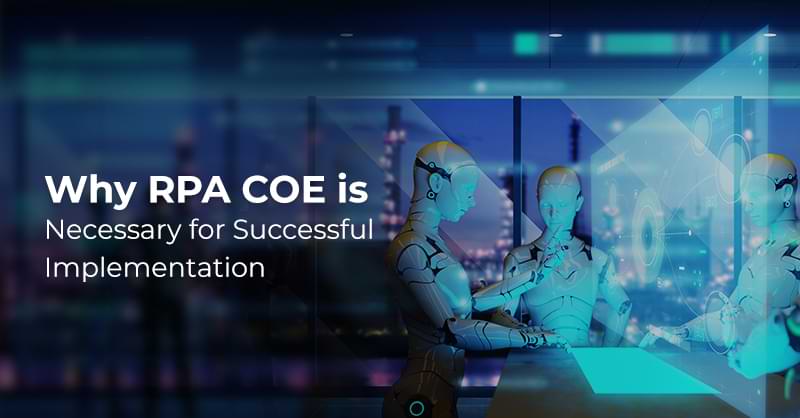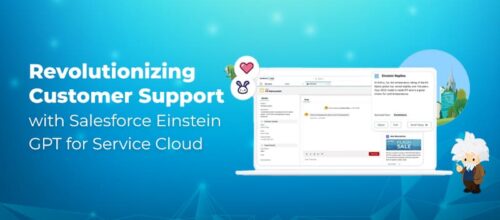Why RPA COE is Necessary for Successful Implementation

Written by Afsa Ashraf
Content Writer
October 19, 2022
Robotic process automation (RPA) is being used by thousands of businesses all over the world to ensure that their processes are more productive, error-free, and secure. RPA is mostly used in organizations to evolve strategically in order to realize corporate objectives and aspirations.
Before implementing and deploying RPA throughout the organization, you must take into account a number of crucial elements, including the infrastructure, ultimate objectives, available resources, and the program’s development. The RPA CoE model can promote digital innovation and transformation.
Only 18% of companies, according to recent research have established a specific CoE model for RPA adoption. A CoE for automation is effective in creating business value, according to almost 88% of these businesses.
What is an RPA CoE?
In a fast-moving, consumer-driven market, RPA has demonstrated its ability to increase efficiency while also providing additional advantages. But creating a well-organized and efficient RPA Center of Excellence (CoE) demands careful consideration, forethought, and work.
Robotic process automation (RPA) can be fully integrated into an organization’s workflows, replacing human employees with machines that are more accurate, quicker, and efficient.
Businesses can automate the repetitive operations that frequently strain human employees by using an RPA CoE. Although a human staff is still required to develop ideas and run the company, their role in carrying out monotonous everyday chores will be much diminished.
The Role of RPA CoE
The ideal goal of an efficient RPA CoE is to deliver essential services using a high-performing operating model. The following components will be present in this model:
The RPA CoE is a pool of capabilities required to drive all the functionalities of an RPA initiative. The CoE functionalities and their processes are:
Organization
RPA integration across the firm is ensured via a solid organizational core. It establishes the roles and duties for both internal and external parties that support each component of an RPA program. In a nutshell, this component establishes the CoE’s organizational framework. In addition to the aforementioned duties, it is also in charge of hiring, educating, and managing changes to resources effectively.
Governance
This component establishes precise guidelines for robotic process automation, including standards, guidelines, policies, escalation processes, and segregation of roles. Additionally, it makes sure that regulatory standards, information security needs, and compliance rules are followed. The level of access granted to various teams or personnel will also be determined by this factor, as well as job prioritization.
Technology
In addition to selecting suitable automation tools for the tasks at hand, a successful RPA CoE setup will also take care of the tools’ upkeep and support requirements. In essence, it creates the environment in which robots operate. Additionally, it will strengthen RPA’s integration into key areas like the Configuration Management Database and IT Service Management.
Processes
This component runs, monitors, and modifies the whole life cycle across the enterprise and is essentially the RPA’s home. It is responsible for assessing automation opportunities and implementing RPA in appropriate contexts with a reliable, scalable support system. This section includes the evaluation, development, testing, and deployment. This includes incident management and change management procedures.
Operations
There are structural adjustments made inside the company as a result of the RPA’s successful adoption. This section examines how the RPA affects human jobs, from modifying job definitions to managing operational change as a whole. It also considers adjustments to organizational structure, keeps an eye on the RPA, and offers assistance when required.
Benefits of a CoE
- Boost the bot development lifecycle’s performance
- Align IT with RPA initiatives
- Expand Rapidly
- Increased ROI
Measures to Consider Before Implementing RPA CoE
Before automation, any steps in the business process that are unnecessary or don’t bring value must be eliminated or terminated. Executing this step is more of a priority for a successful RPA implementation if a fundamental system can be changed to implement automation cost-effectively. Before automating any procedure involving private information and personally identifiable information, the client’s consent must be obtained. Setting up RPA CoE shouldn’t come at the expense of decreased data security or integrity. In the robot’s database or work queues, no private data should be kept. The automation CoE must employ the proper delivery technique to integrate robotics into the operation that is currently outsourcing processes to third parties. The CoE must also carefully assess the RPA vendors and, if appropriate, sign them up as implementation partners. After identifying the core aspects of the RPA CoE, you must choose the CoE’s scope, capabilities, and implementation alternatives. Your company can use a CoE at different levels:
Understanding the fundamentals is essential before adopting an RPA CoE so that enterprise-wide adoption is quick and efficient. A few guidelines must be kept in mind when looking for prospective RPA CoE setup opportunities:
Decentralized CoE or CoE as a Support Function
The decentralized model’s functionalities are dispersed throughout an organization, with separate business units managing various CoE capabilities. Local business teams inside the corporation are subject to less restrictions under this model, which also aids in their development of momentum and competence. By enabling them to use RPA to accomplish company objectives, it transfers the desire for innovation to the workforce. Different lines of business create their own CoE rules and structures under this loosely regulated paradigm. Although this is a fantastic approach to launch an RPA program and might be less expensive, it is challenging to expand and communicate with IT because there is no centralized control.
Centralized or CoE as a Central RPA Provider
In this concept, a centralized automation CoE structure will take care of all the capabilities needed to meet business demands and allow the diffusion of RPA throughout the enterprise. The CoE provides the combined resources and skills needed to properly implement RPA; as a result, individuals in control can examine all activities in one location and have enhanced governance powers over projects and priorities. An end-to-end perspective of process modifications is provided by a centralized CoE structure, facilitating better opportunity discovery. A central model offers a uniform set of guidelines for evaluation, distribution, monitoring, and upkeep. Scaling is made simpler by the aforementioned features.
Hybrid
The majority of businesses combine the first two strategies. For instance, a well-developed CoE should be capable of managing the demands of fragmented business units while maintaining centralized operations. The CoE delivery and operational support in this case. Each business unit will simultaneously have its own criteria for the development, ranking, and evaluation of automation processes.
As previously mentioned, mature efforts that can handle characteristics of both centralized and decentralized models are most suited for a hybrid architecture. It has the scalability of the centralized paradigm, allowing for unrestricted business expansion.
Conclusion
An RPA CoE has a wide range of advantages that can significantly boost a business’s capabilities. Building an automation CoE that properly meets your goals is no simple process. It takes a lot of work to implement the CoE across the entire organization. At Royal Cyber, we have extensive expertise in delivering automation for a variety of use cases across industries and building RPA CoE configurations that perfectly suit your organization. For more information, you can email us at [email protected] or visit www.royalcyber.com
Recent Blogs
- Learn to write effective test cases. Master best practices, templates, and tips to enhance software …Read More »
- In today’s fast-paced digital landscape, seamless data integration is crucial for businessRead More »
- Harness the power of AI with Salesforce Einstein GPT for Service Cloud. Unlock innovative ways …Read More »







